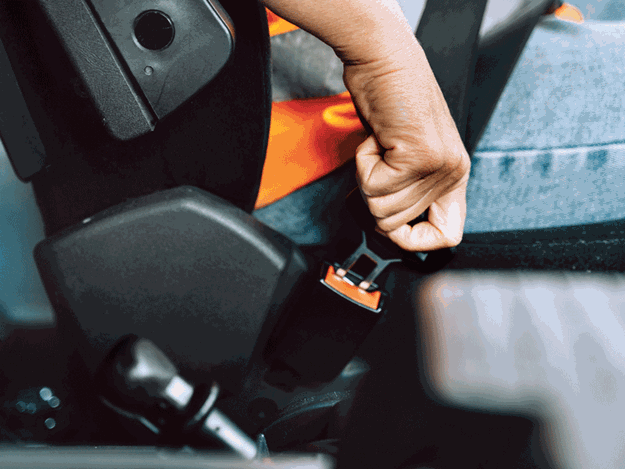Comment: #BeltUp and pay attention
35 years ago Ronald MacDonald had a catchy song about wearing your seatbelt in the car, so are you wearing one in your truck?

Wearing a seat belt may seem like a simple act, but in the log transport industry, it plays a crucial role in protecting the lives of drivers.
Log Transport Safety Council cannot stress enough that where heavy machinery and large vehicles are the norm, safety must always be a top priority.
One crucial safety measure that should never be overlooked is the use of seat belts. Every time you step into your log truck, you trust that it will safely transport you to your destination.
Unfortunately, accidents happen, and the consequences can be severe. The simple act of wearing a seat belt can make a significant difference in the outcome of a crash.
With the transportation of heavy logs over challenging terrain and the situations drivers face on our roads, accidents can happen in the blink of an eye, and the consequences can be devastating.
Wearing seat belts ensures drivers are secure within the vehicle, reducing the risk of ejection during a collision or rollover. The belt keeps individuals from being thrown around the cabin or ejected through windshields, thus greatly minimising the chances of severe injuries or fatalities.
According to the NHTSA, seat belts reduce the risk of death for front-seat occupants by approximately 45% and the risk of moderate-to-critical injuries by around 50%.
The ability of seat belts to distribute crash forces across stronger parts of the body, such as the chest and pelvis, is critical in minimising injuries.
By law, you must wear a fitted seat belt, and although the management of this by PCBUs and regulators is difficult to tackle, as an industry, we need to consistently promote and enforce seat belt usage, building a culture of safety we can all foster.
Employers should prioritise the emphasis on how important buckling up is and provide ongoing reminders. Regular safety inspections, awareness campaigns, and open discussions about the benefits of seat belts can help instil responsible behaviour and make buckling up a non-negotiable habit.
By promoting seat belt usage, the industry can significantly reduce the risks associated with accidents and equipment failure, creating a safer work environment for all involved.
Remember, buckling up is not only a legal requirement but also a matter of personal safety and responsibility. LTSC has developed promotional content around the messaging of wearing seat belts and the validation of why it’s necessary.
The advert on the opposite page is an example. Everyone needs to play their part and encourage their employees to comply with the extremely necessary rules around seat belts.
Find new and used heavy machinery for sale in NZ
Keep up to date in the industry by signing up to Deals on Wheels' free newsletter or liking us on Facebook.





.jpg)


.jpg)


.gif)
.jpg)
.gif)
.jpg)
.gif)

